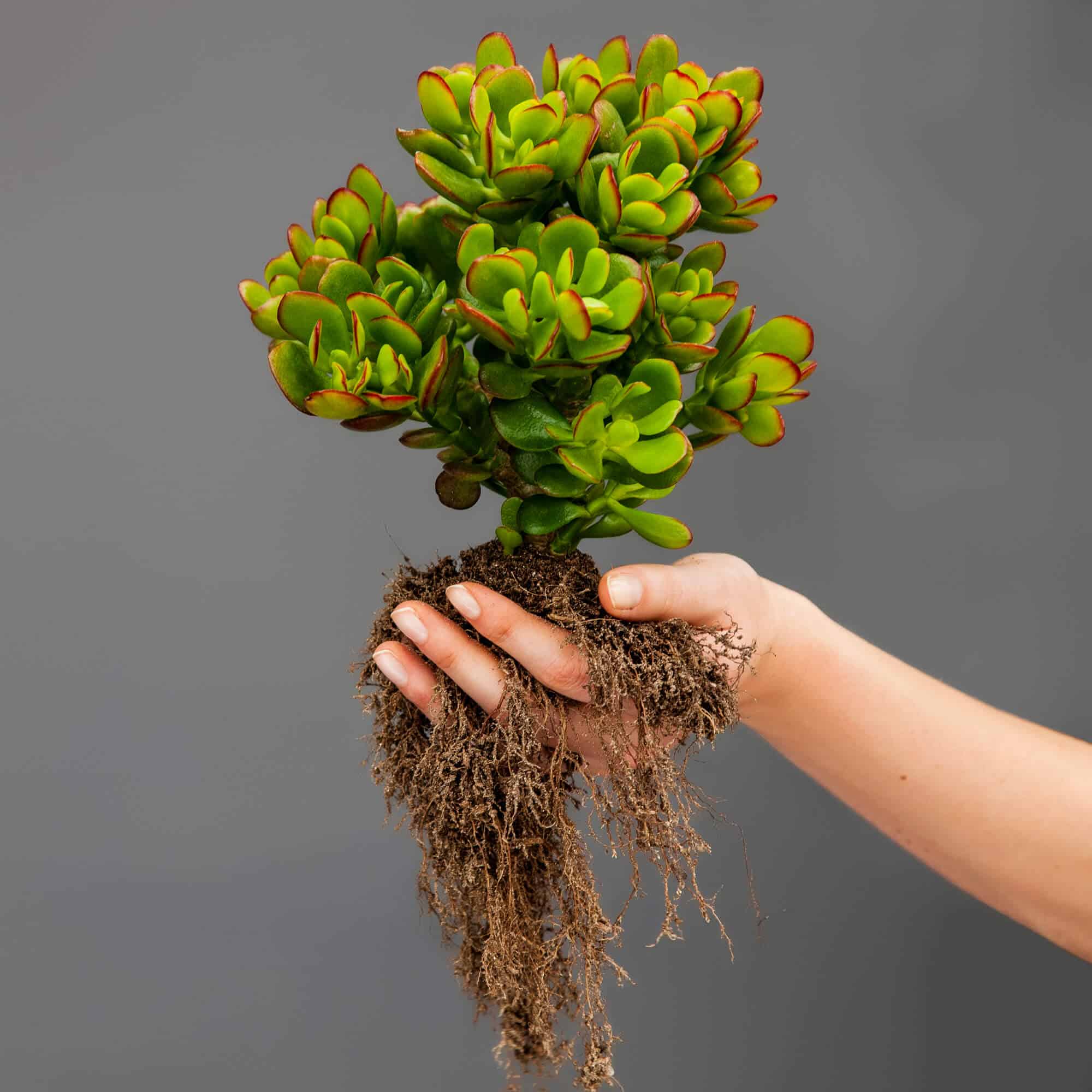Repotting succulents
Succulents and cacti

To prevent your succulents from being undersupplied, they should be repotted at regular intervals. It’s recommended you do this every two years, and these are a few things to keep in mind before you begin:
- Clay or plastic pots are both great options. Clay allows water to evaporate more easily, resulting in less-frequent water logging and root rot.
- Your new pot should be one size larger.
- To make the transition easy for your plants, keep all previous factors the same: location, temperature, sunlight, etc.
How do you know if your plants need to be repotted?
Repotting should occur at the beginning of a growing season or when plants are dormant, usually in spring. Your plants will tell you it’s time for a change when roots start to appear on the soil surface. Roots growing out of the drainage hole are not usually a sign for a change. Plants produce more and more roots as they grow, which leads to a dense root ball with more roots than soil. (To be sure repotting is necessary, lift it out of the pot and check if this is the case.) Other signs for repotting are:
- When a white crust can be seen on the soil (usually caused by saline water)
- Stunted growth
- Bad flowering
- Quick-drying soil
- When a plant looks too big for its pot
How to repot succulents
- Add a drainage layer (fine gravel, polystyrene balls, expanded clay) to the bottom of the new pot. Then add a layer of soil.
- Remove succulent from the pot. Lightly loosen the roots, cut off old and dead roots, and clear away about ⅓ of the old soil.
- Place the succulent in the centre of the pot so that it sits just above the rim.
- Using a hand shovel, fill pot with soil (⅓ sand + ⅔ potting soil), leaving a slight space before the rim (for watering). Press down lightly and lay down mulch to help retain moisture. Wait about a week before watering to give the succulent some time to adjust and establish.
You might also like
Shop online
-
- Sale!
MAXI PUPPY 15KG
- Original price was: R1,729.99.R1,383.99Current price is: R1,383.99.
- Add to cart Learn More
-
VERSUS 100ML
- R189.99
- Add to cart Learn More
-
- Sale!
POT COVER CERAMIC LINA GREEN SURF MATTE CROWN 16.5 CM
- Original price was: R399.99.R279.99Current price is: R279.99.
- Add to cart Learn More
-
LAWN FERTILISER 7.1.3
- R99.99 – R299.99
- Select options This product has multiple variants. The options may be chosen on the product page Learn More




